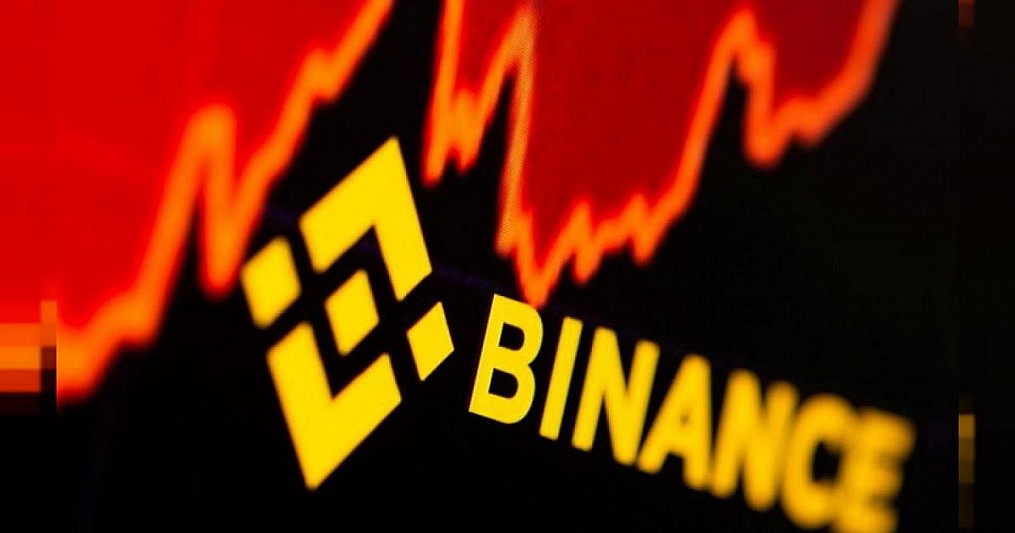Binance Altcoin Trading Hits 78%: Is a 2025 Crypto Bull Run on the Horizon?
14.01.2025 8:30 2 min. read Alexander Stefanov
Altcoins are taking center stage on Binance, with trading activity climbing from 50.8% in mid-2024 to 78% by January 2025.
This trend has sparked speculation that a major altcoin rally could define the crypto market in 2025.

Crypto analyst Burakkesmeci noted the growing participation of retail investors driving altcoin trading volume on Binance. While Bitcoin dominance remains high at 57.74%, up 2.41% in the past month, the increasing focus on altcoins suggests a shift in investor sentiment.
Is an Altcoin Season on the Horizon?
Analysts are divided on whether an altcoin season is imminent. Ethereum, seen as a bellwether for altcoins, has struggled recently, trading at $3,279 after a 15.77% decline over the past month. However, some, like trader Mister Crypto, predict that Ethereum could rally to $8,000, potentially triggering broader growth across altcoins.
Other voices, such as CryptoQuant CEO Ki Young Ju, suggest the dynamics of altcoin market cycles are changing. Rather than capital rotating from Bitcoin into altcoins, he believes only projects with solid use cases and clear value propositions will thrive.
2025: A Crucial Year for Crypto
With prominent industry figures like Bitwise Invest CEO Hunter Horsley expressing optimism for crypto’s future, 2025 is shaping up to be a defining year. Whether the altcoin boom on Binance signals a broader market shift or remains a localized trend will depend on market conditions and the resilience of key projects.
-
1
Ethereum Tops $3,285 for First Time Since January
17.07.2025 7:00 1 min. read -
2
Trump’s Truth Social to Launch Utility Token for Subscribers
10.07.2025 18:30 1 min. read -
3
XRP Hits All-time High Amid Regulatory Breakthrough and Whale Surge
18.07.2025 11:14 2 min. read -
4
Grayscale Reveals Which Altcoins Are Next in Line for Onclusion
11.07.2025 10:00 1 min. read -
5
Arthur Hayes Predicts Monster Altcoin Season: Here is Why
12.07.2025 10:46 1 min. read
Whale Activity Spikes as Smart Money Eyes Reversal Zones
Amid current market volatility, blockchain analytics firm Santiment has reported a notable rise in whale activity targeting a select group of altcoins.
Binance to Launch PlaysOut (PLAY) Trading on July 31 With Airdrop
Binance has officially announced the launch of PlaysOut (PLAY), a new token debuting on Binance Alpha, with trading scheduled to begin on July 31, 2025, at 08:00 UTC.
Cboe BZX Files for Injective-based ETF Alongside Solana Fund Proposal
The Cboe BZX Exchange has submitted a filing with the U.S. Securities and Exchange Commission (SEC) seeking approval for a new exchange-traded fund (ETF) that would track Injective’s native token (INJ).
Bernstein Warns Ethereum Treasuries Pose New Risks
Bernstein has flagged growing risks in Ethereum’s corporate adoption trend, cautioning that the rise of “ETH treasuries” could reshape the network’s supply and risk dynamics.
-
1
Ethereum Tops $3,285 for First Time Since January
17.07.2025 7:00 1 min. read -
2
Trump’s Truth Social to Launch Utility Token for Subscribers
10.07.2025 18:30 1 min. read -
3
XRP Hits All-time High Amid Regulatory Breakthrough and Whale Surge
18.07.2025 11:14 2 min. read -
4
Grayscale Reveals Which Altcoins Are Next in Line for Onclusion
11.07.2025 10:00 1 min. read -
5
Arthur Hayes Predicts Monster Altcoin Season: Here is Why
12.07.2025 10:46 1 min. read


